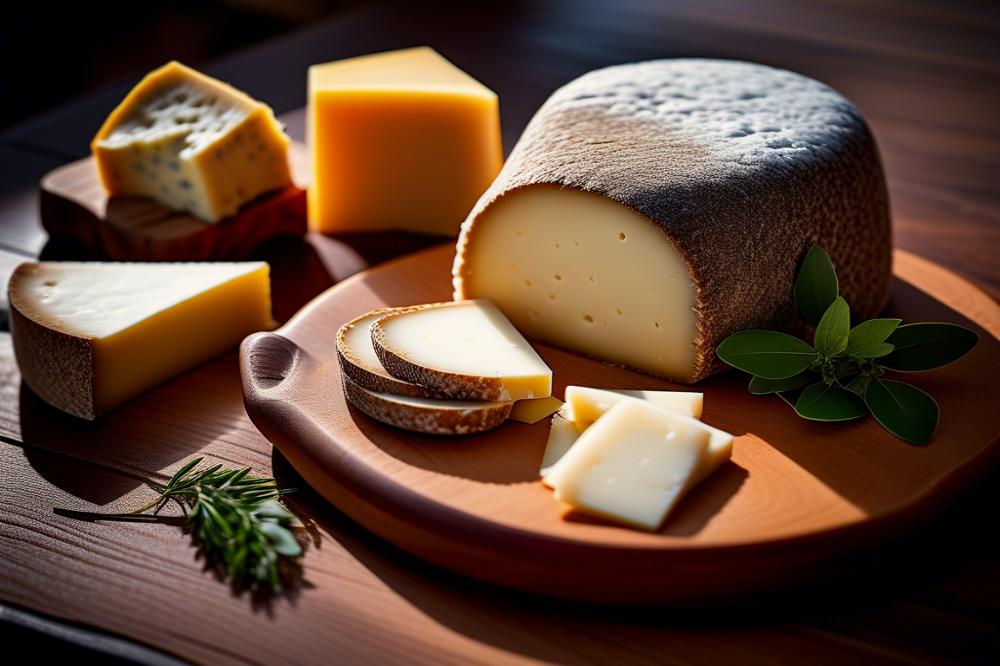Exploring Sardinia’s Traditional Sheep’s Milk Cheeses
Culinary adventure holidays in Italy are more than just a chance to taste delicious food; they open doors to a world rich in culture and history. In Sardinia, travelers can immerse themselves in a landscape filled with stunning views and mouthwatering flavors. One cannot truly appreciate the essence of Sardinian cuisine without delving into the island’s renowned sheep’s milk cheeses. These cheeses, like Pecorino and Ricotta, play a pivotal role in daily meals and celebrations.
Sardinia’s cheese culture is deeply rooted in tradition. Local dairy farms craft artisanal cheese using methods passed down for generations. The cheese-making process is an intricate art, often involving family recipes that date back centuries. Each bite reveals a story, blending the island’s unique geography with its culinary heritage.
Indulging in these traditional cheeses is an experience that captures the heart of the Mediterranean diet. When exploring Sardinia cheese, one discovers a variety of textures and flavors that vary from sharp and tangy to soft and creamy. These diverse cheeses complement local dishes beautifully, enhancing the overall flavor profile of Sardinian fare.
Venturing into the mountains or coastal areas, visitors can witness the passion that local producers have for their craft. The pride in creating sheep’s milk cheese is evident in every cheese wheel. Those who embark on a culinary journey through Sardinia will find that cheese is not just food; it is a celebration of the land and its people. Discovering these culinary treasures truly enriches the experience of exploring this captivating Italian island.
The Rich Tradition of Sardinia cheese

Historical records show that sheep farming has been a crucial part of Sardinian life for centuries. The island’s rugged landscape is ideal for grazing, and these conditions led to the development of a thriving sheep population. For many families, caring for sheep is not just a job; it’s a way of life. This connection to the land and animals has fostered a deep-rooted cheese culture.
Culinary heritage in Sardinia heavily revolves around cheese. Eating cheese is more than a meal; it represents tradition, family, and community. Given the Mediterranean diet’s emphasis on fresh, natural ingredients, cheese plays a vital role in Sardinian cuisine. Many locals cherish their artisanal cheese production methods, which have been passed down through generations.
Among the traditional cheeses, Pecorino stands out as a cornerstone of local gastronomy. Made from sheep’s milk, this cheese is rich and flavorful, with variations found across the island. Its sharpness and saltiness can elevate any dish, from savory pasta to hearty bread.
Another essential type is Ricotta. This cheese, often sweeter and creamier, is typically used in desserts and can be enjoyed fresh or aged. The cheese-making process for Ricotta is quite different compared to Pecorino. While Pecorino requires careful aging, Ricotta is a quick, fresh cheese that farmers often make daily.
Local dairy farms are a key part of this cheese narrative. They provide not only pastoral scenery but also quality ingredients for these specialty cheeses. People who visit Sardinia often discover the connection between the land, the sheep, and the on-site cheese-making. Each bite of Pecorino or Ricotta tells the story of Sardinia’s rich flavors and the people dedicated to preserving this heritage.
Through its distinct cheeses, Sardinia showcases an important part of Mediterranean food culture. Anyone fortunate enough to experience these delicacies will appreciate the depth of tradition behind each variety of cheese.
Pecorino: The Iconic Sardinian Cheese

Pecorino stands out as a true symbol of Sardinia’s cheese culture. This traditional cheese is made from sheep’s milk, giving it a rich and robust flavor. Varieties of Pecorino can greatly differ, depending on factors like aging and the region of origin. Some of the most famous include Pecorino Romano, Pecorino Sardo, and Pecorino Toscano. Each has its own distinct taste profile and texture that cheese lovers adore.
The cheese-making process is an art practiced diligently by local dairy farms. Milk from the sheep is collected daily, ensuring freshness. It is then heated and combined with rennet to help it coagulate. After curds form, they are cut into small pieces, allowing whey to escape. This process continues until the desired texture is achieved. Artisans shape the curds into molds, pressing them to develop their characteristic forms. Aging follows, ranging from a few months to over a year, depending on the type of Pecorino produced. Each stage adds depth to the flavor and texture.
Pecorino plays a vital role in the Mediterranean diet. Its high protein and calcium content make it a nutritious choice. This cheese often finds its way into traditional dishes. It can be grated over pasta, used in salads, or enjoyed on a charcuterie board. Pecorino’s salty and tangy notes pair wonderfully with various beverages, enhancing the overall culinary experience. In Sardinian cuisine, it shines as a key ingredient, reflecting the island’s rich culinary heritage.
Ricotta, a creamy byproduct of the cheese-making process, also deserves attention. Often paired with Pecorino, it brings balance and smoothness to many dishes. Sardinia’s fertile lands and grazing pastures contribute to the quality of the milk, showcasing the importance of local dairy farms. Quality ingredients are fundamental to the creation of artisanal cheese that honors tradition.
As you explore the diverse flavors of Pecorino, you will appreciate its significance. Recipes often highlight this iconic cheese, revealing how it has shaped not only Sardinia’s culinary landscape but also its culture. From appetizers to desserts, Pecorino adds a unique twist that keeps people coming back for more.
Ricotta: The Creamy Delight of Sardinia

Ricotta cheese stands out as one of the beloved traditional cheeses of Sardinia. It offers a fresh and creamy texture that is simply delightful. Local dairy farms raise sheep for their milk, which creates a rich source for this unique cheese. The cheese-making process for Ricotta is quite different from that of Pecorino, another famous Sardinian cheese. While Pecorino has a strong flavor and aged texture, Ricotta is fresh and delicate, often enjoyed right after production.
In Sardinian cuisine, Ricotta plays a significant role. It appears in numerous dishes, blending beautifully with vegetables or sweet ingredients. The cheese is a staple in recipes such as “Culurgiones,” a kind of stuffed pasta that features a filling made with Ricotta, potatoes, and mint. Also, it is used in “Seadas,” where a thin pastry holds Ricotta and is drizzled with honey. Both dishes reflect the island’s rich cheese culture and culinary heritage.
This type of cheese is essential in the Mediterranean diet as well. It’s not only tasty but also nutritious. Artisanal cheese makers on the island help keep this tradition alive. They practice techniques passed down through generations and maintain the quality of their products. This effort contributes to the rich tapestry of flavors that define Sardinian cuisine.
Enjoying Ricotta is about experiencing the essence of Sardinia. Each bite reveals the island’s landscape and history. It’s more than just food; it is a connection to the land and its people. Making and enjoying this cheese helps preserve a way of life that has endured for centuries. Those who savor it can appreciate the care and passion that go into every batch. Embracing Ricotta means embracing the heart of Sardinian culture.
Exploring Local Dairy Farms

Visiting the local dairy farms of Sardinia is a delightful adventure. Here, the rich tradition of cheese-making thrives, showcasing the artisanal methods passed down through generations. Farm tours offer an inside look at how various cheeses are crafted. It’s a hands-on experience that reveals the intricate cheese-making process, from milking the sheep to aging the cheese in unique environments.
Guests often start by roaming through the pastures, watching the sheep graze on native herbs and grasses. This diet contributes to the distinct flavors found in Pecorino and Ricotta. Engaging with the farmers provides insight into their daily routines and passion for their craft. Observing traditional practices can deepen anyone’s appreciation of these delicacies.
During a cheese tasting session, visitors sample a range of cheeses that reflect the essence of Sardinian cuisine. Attendees might try fresh Ricotta, creamy Pecorino, or aged varieties bursting with character. Each bite tells a story of the Mediterranean diet, emphasizing local ingredients and time-honored techniques. Knowledge about how cheese is paired with local wines enhances the overall experience.
Many local dairy farms offer workshops too. Participating in these sessions allows travelers to learn the art of making traditional cheese firsthand. Forming curds and pressing them into molds creates a deep connection to the region’s culinary heritage. Sharing these moments with the cheese-makers elevates the journey, turning it into something truly special.
Engagement with the cheese culture here goes beyond mere tasting. It involves understanding the challenges and joys of farming in this picturesque landscape. Each farm has its own story, its unique weapons against the modern food industry. By supporting these artisans, visitors contribute to preserving Sardinia’s rich gastronomic history.
Exploring the heart of these local dairy farms not only satisfies the palate but enriches the soul. It’s an invitation to be part of something greater, a legacy that continues to shape the culinary scene. Uniting passion with tradition, these farms create an unforgettable experience for every visitor.
Sardinia Cheese in the Broader Mediterranean Context
Exploring the role of cheese in Sardinian cuisine reveals much about the Mediterranean diet. Sardinia produces distinct varieties, most notably Pecorino and Ricotta. These traditional cheeses share common ground with other Mediterranean favorites, offering a rich flavor experience. For example, while Greek Feta boasts a crumbly texture, Pecorino delivers a salty, robust taste that complements many dishes.
The health benefits of enjoying artisanal cheese are noteworthy. Typically made from sheep’s milk, these cheeses are a good source of calcium and protein. They also contain healthy fats that can contribute positively to heart health when consumed in moderation. Compared to processed cheese, the nutrient profile of traditional cheese is often superior. Locally sourced products from dairy farms maintain freshness and flavor, allowing consumers to enjoy more than just a snack.
Culinary heritage plays a critical role in shaping these flavors. Sardinian cheese-making is steeped in history, showcasing techniques passed down through generations. The cheese-making process requires skill and patience, ensuring each variety reflects the island’s unique character. This devotion to tradition distinguishes Sardinian cheeses from mass-produced options found elsewhere.
It’s important to consider the global appreciation for these cheeses. Chefs and food lovers around the world now seek out Sardinian options for their quality and taste. As interest in the Mediterranean diet grows, the demand for traditional cheese rises. Speciality food shops and gourmet restaurants often include these delightful offerings on their menus. Ultimately, this attention boosts their significance beyond regional borders.
Comparing Sardinian cheese with other Mediterranean variants reveals a broader story of food culture. Each region contributes its flavors, techniques, and stories. The variety in cheese types enhances the Mediterranean diet and promotes sharing among families and friends. In this way, cheese is more than a food; it symbolizes connection and tradition.
Embark on a Culinary Journey
Exploring Sardinia’s traditional sheep’s milk cheeses is not just about tasting. It’s an exciting journey into the heart of Sardinian culture and history. Cheeses like Pecorino and Ricotta reveal the island’s rich pastoral traditions. Each bite carries stories of the land, the people, and their age-old practices.
Local cheese-making is a cherished craft. Families pass down recipes through generations, creating strong ties between food and heritage. When travelers engage with artisans, they gain insights into these rich traditions. Discovering how these cheeses are made not only entertains but also educates.
Every region has its distinct flavors. The mix of local grasses and herbs infuses the cheeses with unique tastes, making each sampling an adventure. A culinary holiday in Sardinia offers more than unusual flavors; it connects visitors with the spirit of the island.
Tasting these cheeses paired with Sardinian wines is a true delight. This combination elevates the experience and showcases local gastronomy at its best. Visitors can explore beautiful landscapes while indulging in authentic, unforgettable flavors.
This journey is an invitation to step into a world where food is more than just sustenance. It’s woven into the fabric of Sardinian life. Consider this a chance to appreciate the wealth of tradition and hospitality. Exploring Sardinia’s sheep’s milk cheeses is a flavorful adventure waiting to unfold.



